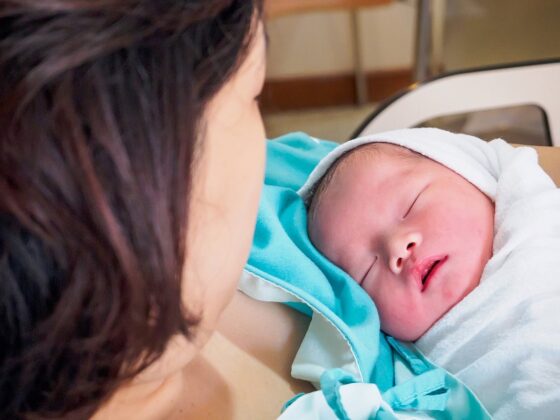Time to Celebrate!
This month marks the 40th anniversary of a federal law that changed the healthcare game—and its impact is still felt today. As groundbreaking as the legislation was, it still left one big problem unresolved. Any guesses what legislation this might be?
Maybe you’re thinking of Medicare’s Diagnostic Related Groups (DRGs) for hospital payments. Close, but not quite—those came in 1983. How about COBRA, the law that allows workers to keep their health coverage after losing a job? Another great guess, but COBRA was passed in 1986. Even a Google search for “landmark healthcare legislation 1984” probably is unlikely to lead you to the correct answer.
Ready to find out which landmark law is celebrating its 40th anniversary? It’s the Drug Price Competition and Patent Term Restoration Act, better known as the Hatch-Waxman Act. Let’s explore what this law accomplished—and what it didn’t.
Behind the Act
To understand the Hatch-Waxman, we first need to go back to 1962 and the Kefauver-Harris Amendments to the Food, Drug, and Cosmetic Act. The Kefauver-Harris Amendments came in the wake of the global thalidomide tragedy, where a drug for morning sickness caused thousands of children to be born with severe birth defects. Public outcry was massive, and Congress stepped in to protect Americans from a similar event.
The Kefauver-Harris Amendments required pharmaceutical companies to prove not just that their drugs were safe, but also effective for their intended use. Drug companies had to run extensive clinical trials and provide solid evidence to the FDA that their products actually worked and were safe, paving the way for today’s rigorous drug approval system.
But this progress came with a price. The new requirements made drug development more expensive and the process much longer. Pharmaceutical companies argued that by the time their drugs passed clinical trials and got FDA approval, their patent protections were nearly up, leaving them little time to recoup development costs.
The David vs. Goliath Battle
Pharmaceutical companies lobbied hard for Congress to extend drug patent protections to cover the time spent in clinical trials and FDA review. Meanwhile, smaller generic drug manufacturers had their own battle—they were required to run the same lengthy, costly trials for generics, even though these drugs were just copies of existing, already-approved drugs. As a result, the market for generics was small. In 1983, only 35% of top-selling drugs with expired patents had generic competition, and generics held a mere 13% market share.
Both sides pushed their agendas—pharmaceutical giants wanted longer patent protections to protect their profits, while generic manufacturers fought for less stringent approval rules. It was a classic David vs. Goliath showdown.
A Bipartisan Solution
By 1984, Congress realized the system was broken. Brand-name drug companies weren’t incentivized to invest in new research, and consumers were being denied affordable generic alternatives. The solution? A bipartisan effort led by Senator Orrin Hatch (R) and Representative Henry Waxman (D). Together, they crafted the Drug Price Competition and Patent Term Restoration Act, commonly known as the Hatch-Waxman Act, which passed on September 24, 1984.
Hitting the Mark
The Hatch-Waxman Act jump-started the generic drug industry by making it easier and faster to bring generics to market once a brand-name drug’s patent expired. The Hatch-Waxman Act established the Abbreviated New Drug Application (ANDA) where the generic drug company only needs to show bioequivalence of their drug. Plus, they were allowed to start testing before the brand-name patent expired without worrying about legal trouble from the original patent holder.
On the flip, brand drug manufacturers were allowed restoration of that part of the patent term lost to the time taken for FDA required pre-market testing and review, up to a maximum of 5 years for new drug applications.
The Hatch-Waxman also introduced other key changes that reshaped the pharmaceutical industry including:
- 180 Days of Exclusivity: The first generic manufacturer to successfully challenge a brand-name drug’s patent got 180 days of market exclusivity, meaning they’d be the only generic on the market for six months.
- Generic Substitution: The Act allowed states to create laws that would allow pharmacists to substitute generic equivalents for brand-name prescriptions. The only exceptions were if the doctor wrote “Do Not Substitute” or if the patient requested the brand-name version.
- Exclusivity for Brand-Name Drugs: Even when a drug’s patent expired, Hatch-Waxman gave exclusivity periods to brand-name manufacturers in certain situations—like when they found a new use for an existing drug or changed its formulation. This extended their time without generic competition.
Unfinished Business
Hatch-Waxman successfully fueled generic drug competition, Today, generics make up 90% of all prescriptions in the U.S. Meanwhile, costly brand-name drugs make up over 80% of prescription drug spending.
Forty years later, the challenge persists: how do we support the development of groundbreaking new drugs while addressing brand manufacturers’ demands for high prices, all without making medications unaffordable for patients and plan sponsors?
Happy reading,
- Vital News: current healthcare news, including drop in overdose deaths, at home flu vaccine and fall vaccine survey results.
- Buyer Beware: toxic supplements, testosterone clinics & infertility and ghost networks.
- Drug Wars: Right to Try v. Expanded Access, Cigna demands retraction of FTC PBM report, FTC sues PBMs over insulin prices.
- Caring Matters: including my personal favorite, The Woman Who Stood Between America and a Generation of ‘Thalidomide Babies’!
Vital News
NPR
U.S. overdose deaths plummet, saving thousands of lives
HealthDay
FDA Approves First Flu Vaccine You Give Yourself at Home
Managed Healthcare Executive
Survey: One-Third of Adults Say They Don’t Need Fall Vaccines
Buyer Beware
University of Michigan Medicine
15 million Americans take supplements that may be toxic to the liver
Wall Street Journal
Testosterone Clinics Sell Virility. Some Men End Up With Infertility.
ProPublica
“I Don’t Want to Die”: Needing Mental Health Care, He Got Trapped in His Insurer’s Ghost Network
Drug Wars
MedShadow Foundation
Choices For The Terminally Ill: FDA’S Expanded Access Program Or Right To Try Act?
Wall Street Journal
Cigna Demands FTC Retraction in Escalating Drug-Price Fight
Associated Press
High insulin prices spur a federal lawsuit against three pharmacy benefit managers
Caring Matters
Smithsonian
Scientists Play Matchmaker for Beloved Sea Snails in the Florida Keys
The Conversation
A short history of the rise, fall and return of Detroit’s Michigan Central Station
Smithsonian Magazine
The Woman Who Stood Between America and a Generation of ‘Thalidomide Babies’
Enjoy the weekend!
Best,
Suzanne
Suzanne Daniels, Ph.D.
AEPC President
P.O. Box 1416
Birmingham, MI 48012
Office: (248) 792-2187
Email: [email protected]

News you can trust



